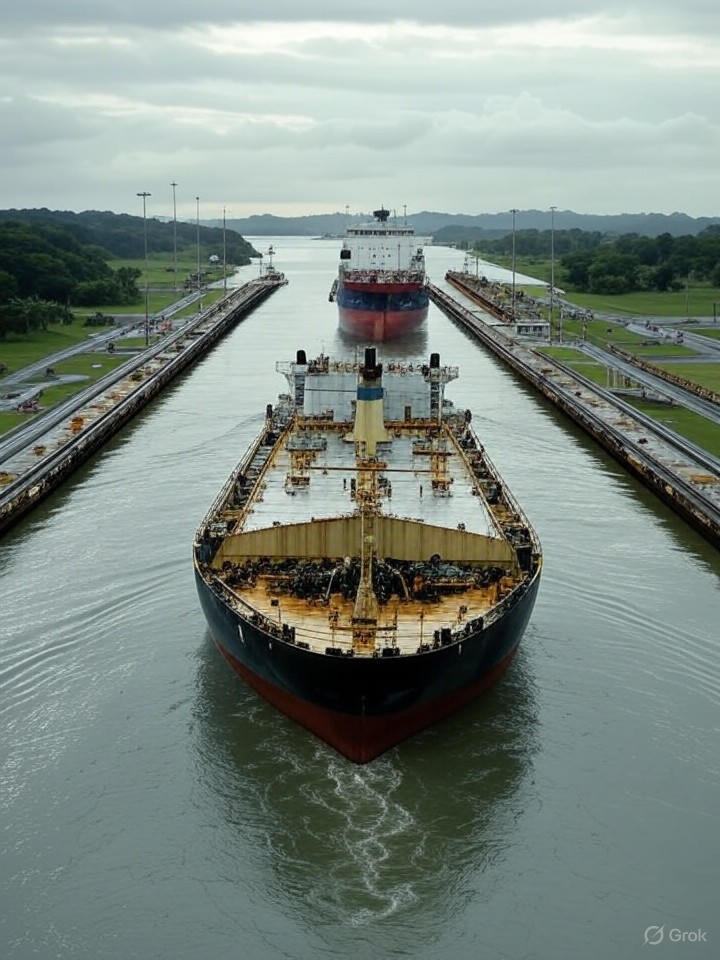The Panama Canal, a linchpin of global trade handling about 5% of the world’s maritime commerce, is facing an escalating crisis from recurrent droughts exacerbated by climate change and El Niño patterns. In 2025, authorities have managed to maintain operations without the severe disruptions seen in previous years, but experts warn that the waterway’s vulnerabilities are far from resolved. Recent reports highlight how water scarcity in Gatun Lake, the canal’s primary reservoir, continues to threaten transit volumes, with implications for shipping costs and supply chains worldwide.
Last year’s dry season saw the canal authority successfully uphold a 50-foot draft, allowing larger vessels to pass and averting the bottlenecks that plagued 2023 and 2024. However, as SAFETY4SEA noted in July, this stability came amid ongoing concerns over long-term water levels, influenced by erratic rainfall tied to global warming.
Engineering Solutions on the Horizon: As climate models predict more intense El Niño events, the Panama Canal Authority is pushing forward with ambitious infrastructure projects to safeguard the route’s viability. A proposed new dam on the Indio River could add millions of cubic meters to water reserves, while a land bridge initiative aims to divert some cargo traffic via rail, reducing reliance on water-intensive locks. These measures, detailed in a recent CNBC analysis, represent a multi-billion-dollar bet on resilience, though completion timelines stretch into the late 2020s, leaving the canal exposed to near-term risks.
Industry insiders point out that these droughts aren’t isolated; they’re part of a broader pattern where rising temperatures amplify El Niño’s drying effects, as illustrated in graphics from Woodwell Climate Research Center. In 2023, transit slots were slashed by over a third, forcing ships to reroute via longer paths like the Suez Canal or around Cape Horn, inflating fuel costs and delivery times.
The economic ripple effects are profound, with U.S. importers particularly hard-hit since the canal facilitates 40% of container traffic to and from Asia. A 2024 Associated Press report documented how such restrictions drove up shipping rates by as much as 20%, contributing to inflationary pressures in consumer goods from electronics to grains.
Global Trade Disruptions Amplified: Beyond immediate logistics, the canal’s woes underscore vulnerabilities in international supply chains, where climate-induced disruptions could become the norm. Posts on X from shipping analysts in 2025 echo sentiments from earlier crises, with users like Eric Holthaus highlighting queues of over 200 vessels during peak droughts, each transit guzzling 51 million gallons of freshwater. This scarcity not only delays cargo but also raises environmental costs, as alternative routes increase carbon emissions from extended voyages.
Panama’s government is exploring water recycling technologies and reforestation to bolster watershed health, but critics argue these palliatives fall short against accelerating climate shifts. A Foreign Policy piece from earlier this year questioned the canal’s long-term survival, drawing parallels to other chokepoints like the Suez, besieged by geopolitical and weather woes.
For shippers, adaptation means diversifying routes—some are eyeing Nicaragua’s long-mooted canal alternative, revived amid Panama’s struggles, as mentioned in X discussions referencing Chinese investments. Yet, as The New York Times reported in 2023, no quick fix exists for a system designed over a century ago in a cooler era.
Policy and Investment Imperatives: To mitigate future shocks, stakeholders must prioritize international cooperation on climate adaptation, including funding for Panama’s projects through bodies like the World Bank. Recent news on X, such as CNBC’s tweet on engineering overhauls, signals optimism, but without aggressive emission cuts globally, El Niño’s grip could tighten, potentially halving canal capacity by mid-century according to some projections.
Ultimately, the Panama Canal’s predicament serves as a stark reminder for trade-dependent economies: invest in resilience now or face cascading disruptions later. With 2025’s relative calm possibly a brief reprieve, insiders are watching the next dry season closely, aware that the interplay of drought and trade could redefine global commerce for decades.
